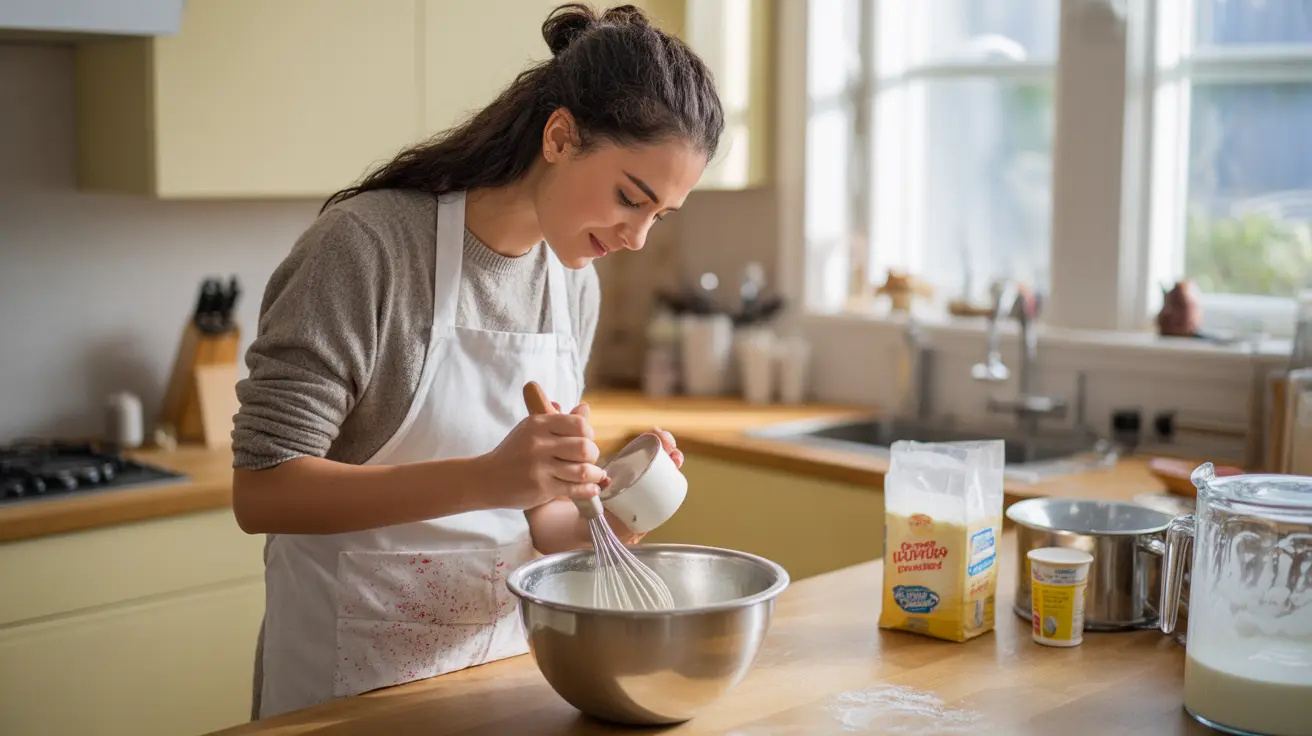If you've ever found yourself craving homemade whipped cream but only have whole milk in your refrigerator, you might wonder if it's possible to create that fluffy, dreamy topping without heavy cream. While making traditional whipped cream with whole milk alone isn't possible, there are several creative methods and alternatives you can use to achieve a similar result.
Understanding why whole milk behaves differently from heavy cream, and knowing the right ingredients to add, can help you create a delicious whipped topping that satisfies your craving. Let's explore the science behind whipped cream and discover how to work with whole milk to create a satisfying alternative.
Understanding the Science of Whipped Cream
The key difference between whole milk and heavy cream lies in their fat content. Heavy cream contains around 36% fat, while whole milk only has about 3.25% fat. This significant difference in fat content explains why heavy cream can form stable peaks when whipped, while whole milk alone cannot.
When heavy cream is whipped, the fat molecules create a network that traps air bubbles, resulting in that familiar light and fluffy texture. Whole milk's lower fat content means it lacks the necessary structure to hold these air bubbles, making it impossible to whip on its own.
Methods to Make Whipped Cream with Whole Milk
Using Stabilizers and Thickeners
To create a whipped cream-like texture using whole milk, you'll need to add specific ingredients that can provide structure and stability:
- Unflavored gelatin
- Cornstarch
- Non-fat dry milk powder
- Xanthan gum
Basic Recipe Method
Here's how to create a whipped topping using whole milk and stabilizers:
- Combine whole milk with dry milk powder
- Add a small amount of cornstarch or gelatin
- Chill the mixture thoroughly
- Whip with an electric mixer until soft peaks form
- Add sugar and vanilla extract to taste
Storage and Safety Considerations
When making whipped cream with whole milk, proper storage is crucial for both safety and texture maintenance. Store your homemade whipped topping in an airtight container in the refrigerator. Unlike traditional whipped cream, milk-based versions may separate more quickly and typically last only 1-2 days when properly refrigerated.
Dairy-Free Alternatives
For those seeking dairy-free options, several alternatives can create a whipped cream-like texture:
- Coconut cream
- Aquafaba (chickpea liquid)
- Cashew cream
- Commercial non-dairy whipping creams
Frequently Asked Questions
- Can you make whipped cream with whole milk instead of heavy cream, and how does it compare in taste and texture?
While you cannot make traditional whipped cream with whole milk alone, you can create a similar product by adding stabilizers like gelatin or cornstarch. The texture will be lighter and less rich than traditional whipped cream, and the taste will be milder due to the lower fat content.
- What ingredients do I need to add to whole milk to make it whip up like real whipped cream, and why is this necessary?
You'll need stabilizers such as unflavored gelatin, cornstarch, or dry milk powder to create structure. These ingredients are necessary because whole milk lacks the fat content needed to trap air and create a stable whipped texture.
- Is homemade whipped cream made from whole milk safe to store, and how long does it last in the refrigerator?
Whipped topping made with whole milk is safe to store in the refrigerator for 1-2 days when kept in an airtight container. However, it may separate more quickly than traditional whipped cream and should be used as soon as possible for the best results.
- Are there dairy-free or vegan alternatives to whipped cream that don't use heavy cream, and how do they work?
Yes, several dairy-free alternatives exist. Coconut cream can be whipped similarly to heavy cream, aquafaba (chickpea liquid) creates a light, meringue-like texture, and cashew cream can be whipped into a rich topping. These alternatives work because they contain proteins or fats that can trap air and create stable foam.
- Why does heavy cream make better whipped cream than milk, and what role does fat content play in the final texture?
Heavy cream makes better whipped cream because its high fat content (about 36%) allows fat molecules to create a stable network that traps air bubbles, resulting in firm peaks and a rich texture. Milk's lower fat content (about 3.25%) cannot create this structure naturally, which is why stabilizers are needed.




